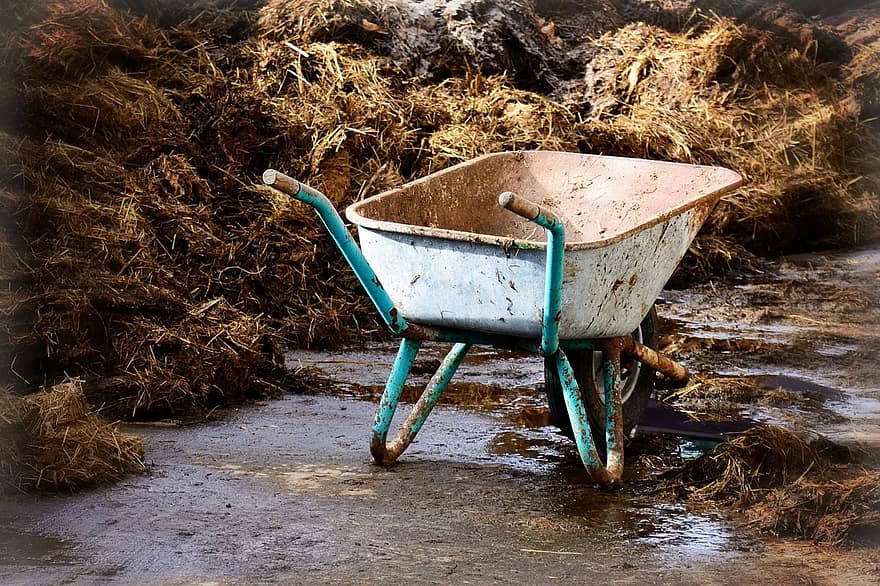One can simplify how to mix urea fertilizer with water by measuring what your garden needs.
It’s relatively simple, but it’s also one of those tasks that you can mistakenly overlook.

However, it’s a skill that you must know like the back of your hand, considering you are likely to use urea fertilizer with water on your crops.
Before you even start growing plants in the greenhouse, you should already know how to mix urea with fertilizer because most crops benefit from nitrogen.
In particular, this will promote leaf and bloom growth, and urea itself aids in photosynthesis.
Therefore, one can conclude that if you grow plants in an ideal environment such as a greenhouse and learn proper fertilizer mixes, you should have a productive and potentially profitable yield without drawbacks.
How To Mix Urea Fertilizer With Water For Beginners
It’s unnecessary to broaden the subject of mixing urea fertilizer with water because its main concept is proper measurement.
Once you understand that, you shouldn’t have any problem with creating this mixture. But to start, you also have to know what urea fertilizer to work with.
For newbie gardeners, you will find a label on the urea fertilizer indicating 46-0-0.
To make the explanation simple, this label means that it has less than 0.25% of biTrate grade.
You want to use a urea fertilizer with a low biTrate grade because anything higher can injure plants.
Once you’ve selected your urea fertilizer, measure how much you want to dissolve.
One of the most common ways to apply urea on gardens is by foliar sprays, and if this is the case, you’re aiming for around 0.5 or 2% urea by weight.
In other words, 20 grams of urea per one liter of water is what you want for your mixture.
Once you have this measurement, put it in your sprayer and add the water, and it should dissolve easily with gentle shaking.
How To Prepare Liquid Fertilizer
An example of a liquid fertilizer is the urea and water mixture previously discussed. This is one of the most common solutions to use for spray or drenching the soil.
This way, you can quickly provide nitrogen to your plants in a dilute mixture that is safe for them.
For leafy vegetables that usually benefit from liquid fertilizers, you want to have a 1% urea solution. Prepare urea granules, weighing scale, water, water dispenser, container, and a marker.
Depending on the volume you need, convert it to a unit of weight using 1:1 volume-to-weight equivalent of water and follow the instructions discussed earlier.
Technical accuracy is essential, but you can always simplify the usage of liquid fertilizer.
In general, never forget to have 1 level tablespoon of urea granules in 1 liter of water.
Put this volume of water in a 1-liter bottle so you can mark the top level that will indicate the solvent in excess for the water.
What Is Foliar Spray?
Foliar spray refers to providing the nutrients via the leaves. Because the leaves directly absorb them, they can quickly remedy the plant of nutrient deficiencies.
Urea fertilizer with water is a typical foliar spray for primary nutrients like nitrogen, but it is also useful for other trace elements.
If you’re using urea fertilizer with water for foliar spray, you can use 0.5% urea to start, but it can be closer to 2% for nutrient deficiencies.
Your plants will have discolored or decaying leaves, which indicates that they lack nitrogen. You can then spray the leaves of your plants with the solution at night or early morning.
You can do light coating as long as the whole plant gets covered. You mustn’t spray when it’s hot because absorption wouldn’t be as efficient.
Your plants should get better in the next few weeks, and this is where using a greenhouse makes it easier to determine other potential problems.
If you have given your plants nitrogen and you’re sure that they have the optimal growing conditions indoors, you can quickly look for other practices or instances that may have caused plants’ problems.
On the contrary, there will be many factors to consider that may have caused those signs in your plants if you’re growing them outdoors.
Advantages And Disadvantages Of Urea
For starters, urea is easy to find, and it is affordable compared to other plant fertilizers.
It’s a quick source of nitrogen, and it doesn’t have special requirements for storage, so you can keep it long-term. Some gardeners also use urea to acidify their soil.
However, you should be aware that there can be drawbacks if you don’t use urea properly.
Emphasis is necessary on using urea with less than 0.25% bitrate because higher than this can be phytotoxic to plants.
Additionally, those with large areas may find it impractical to use urea due to nitrogen loss when ammonium evaporates.
Conclusion
Knowing how to prepare liquid fertilizer and foliar spray is a skill you should be ready to start planting.
This includes how to mix urea fertilizer with water that you can simplify into using a 46-0-0 urea fertilizer with less than 0.25% of biTrate.
Measure how much you need to dissolve by weight or remember using 20 grams of urea per one liter of water and gently shake the container for the urea to dissolve fully.

Can the same process apply to D compound fertilizer?
Your advise for foliar fitizing good.
You make it sound so simple But- I have bag of Greenway urea. This is by Biotech. These are little blue balls and have been sitting in water for over three hours without breaking down. They are either the wrong form of urea, or I am missing something, but no way can I spray what I have. Also, in trying to find something I can use none say sprayable.